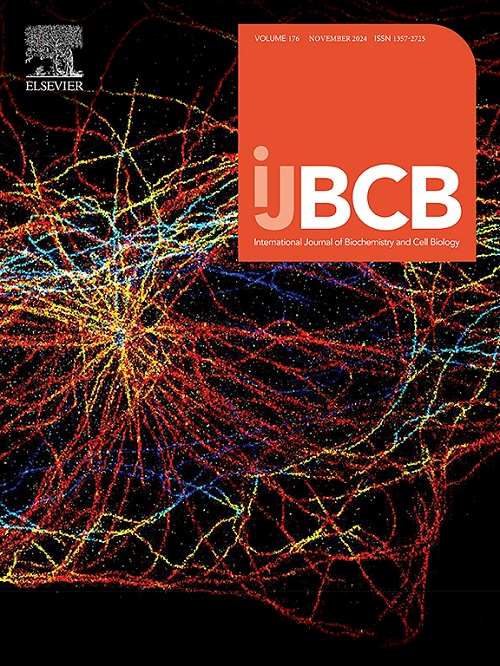经典迷幻药对大脑单胺能系统的作用。
IF 3.4
3区 生物学
Q2 BIOCHEMISTRY & MOLECULAR BIOLOGY
International Journal of Biochemistry & Cell Biology
Pub Date : 2024-09-25
DOI:10.1016/j.biocel.2024.106669
引用次数: 0
摘要
由于经典迷幻药在治疗包括重度抑郁和焦虑症在内的多种精神疾病方面具有临床潜力,对其作用机制的研究已引起了人们的极大兴趣。这些药物与 5-羟色胺受体(5-HTR)结合,包括 5-HT1AR、5-HT2AR、5-HT2BR 和/或 5-HT2CR,以及其他靶点。5-HTR 可调节上升单胺能神经元的活动,这一机制主要涉及经典抗抑郁药物、抗精神病药物和滥用药物的作用。关于单胺能神经元活动受经典迷幻药控制的神经化学数据很少。在此,我们回顾了现有的数据,以确定经典迷幻药是否会对血清素能、多巴胺能和去甲肾上腺素能神经元产生特定的神经化学效应。数据显示,这些药物对每种单胺能系统都有不同的影响,表现出一种复杂的反应,具有状态依赖性和区域特异性效应。例如,几种迷幻药会抑制血清素能神经元的发射,但这并不一定与所有区域的血清素释放减少有关。去甲肾上腺素能神经元的自发活动似乎也会受到迷幻药的抑制,但这并不一定与所有区域的去甲肾上腺素释放量减少有关。迷幻药对多巴胺能系统的影响也很复杂,因为上述 5-HTRs 可能会对多巴胺能神经元的活动产生相反的影响,而这种影响的程度则取决于状态。迷幻药对单胺能神经元活动的影响尽管有特定的循环机制,但显然缺乏明确的神经元特征。这篇综述总结了迷幻药对单胺类神经调节剂血清素、多巴胺和去甲肾上腺素的作用,汇集了反复出现且相互矛盾的研究结果,表明迷幻药的单胺类特征(如果适用)将取决于状态和区域。本文章由计算机程序翻译,如有差异,请以英文原文为准。
Classical psychedelics’ action on brain monoaminergic systems
The study of the mechanism of action of classical psychedelics has gained significant interest due to their clinical potential in the treatment of several psychiatric conditions, including major depressive and anxiety disorders. These drugs bind 5-hydroxytryptamine receptors (5-HTR) including 5-HT1AR, 5-HT2AR, 5-HT2BR, and/or 5-HT2CR, as well as other targets. 5-HTRs regulate the activity of ascending monoaminergic neurons, a mechanism primarily involved in the action of classical antidepressant drugs, antipsychotics, and drugs of abuse. Sparse neurochemical data have been produced on the control of monoaminergic neuron activity in response to classical psychedelics. Here we review the available data in order to determine whether classical psychedelics have specific neurochemical effects on serotonergic, dopaminergic, and noradrenergic neurons. The data show that these drugs have disparate effects on each monoaminergic system, demonstrating a complex response with state-dependent and region-specific effects. For instance, several psychedelics inhibit the firing of serotonergic neurons, although this is not necessarily associated with a decrease in serotonin release in all regions. Noradrenergic neuron spontaneous activity also appears to be inhibited by psychedelics, also not necessarily associated with a decrease in noradrenaline release in all regions. Psychedelics influence on dopaminergic systems is also complex as the above-mentioned 5-HTRs may have opposing effects on dopaminergic neuron activity, in a state-dependent manner. There is an apparent lack of clear neuronal signature induced by psychedelics on monoaminergic neuron activity despite specific recurrent mechanisms. This review provides a current summary of the action of psychedelics on monoamine neuromodulators serotonin, dopamine and noradrenaline, compiling reoccurring and contradictory findings demonstrating that a monoamine signature of psychedelics, if applicable, would be state- and region-dependant.
求助全文
通过发布文献求助,成功后即可免费获取论文全文。
去求助
来源期刊
CiteScore
8.10
自引率
0.00%
发文量
124
审稿时长
19 days
期刊介绍:
IJBCB publishes original research articles, invited reviews and in-focus articles in all areas of cell and molecular biology and biomedical research.
Topics of interest include, but are not limited to:
-Mechanistic studies of cells, cell organelles, sub-cellular molecular pathways and metabolism
-Novel insights into disease pathogenesis
-Nanotechnology with implication to biological and medical processes
-Genomics and bioinformatics

 求助内容:
求助内容: 应助结果提醒方式:
应助结果提醒方式:


